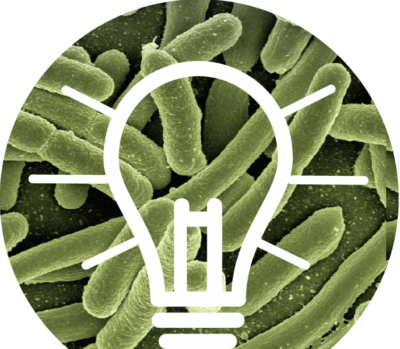FAST in anaerobic thermophiles for the first time ever! TU Wien’s Rémi Hocq et al. have just reported FAST in Thermoanaerobacter kivui in Front. Bioeng. Biotechnol. 2023.
Why anaerobic thermophiles?
Anaerobic thermophilic bacteria are top-of-the-list candidates for turning one-carbon feedstock into biofuels or chemicals. Indeed, anaerobes typically display high carbon and energy efficiency. Beyond, thermophilic microbes offer additional benefits compared to mesophiles. Namely, they feature higher catalytic turnover rates, lower cooling/distillation costs and contamination risks.
Of those anaerobes, T. kivui is of utmost relevance. It indeed converts one-carbon feedstocks, e.g., carbon dioxide or any mixture CO2/[H]. And also, forward and reverse genetic approaches are readily applicable to T. kivui.
FAST in Thermoanaerobacter kivui
Now, when it comes to metabolic engineering, things are not so easy! Anaerobic lifestyle restricts the use of common fluorescent reporters such as GFP. Those indeed require oxygen for chromophore maturation. An issue actually shared with any anaerobes. It turns out that FAST of The Twinkle Factory requires no oxygen! Several teams in the USA and in Europe have successfully implemented FAST in a variety of anaerobes: Clostridium, Acetobacterium woodii, Eubacterium limosum… Archaea and protozoa have also joined the family. The temptation was hence great to test FAST in T. kivui. at optimal growth conditions in the 50-72°C range.
Here, the authors have employed pFAST, the latest release of FAST, in T. kivui. After optimization, they found it highly functional even at 66°C growth temperature with tfLime (green) and tfCoral (red). Finally, pFAST enabled simple, direct, quantitative and fast fluorescence measurements on a variety of expression plasmids. The authors implemented both flow cytometry and plate reading setups.
To the best of our knowledge, this is the first time a fluorescence reporter system is successfully used in an anaerobic thermophile.
Dr. Rémi Hocq, TU Wien
Comparing expression profiles in aerobic, microaerobic or anaerobic conditions therefore becomes easily possible with a single O2- independent fluorescent system. The authors hence suggest pFAST for studies in facultative anaerobes such as Geobacillus thermoglucosidasius.
The Twinkle Factory offers commercial fluorogens for FAST, pFAST, greenFAST & redFAST, frFAST, and their related split versions, e.g., splitFAST. tfFox-NP, a bright non-permeant fluorogen, and tfDarth, a “dark” chromophore, have recently completed the product range.

Recent Comments